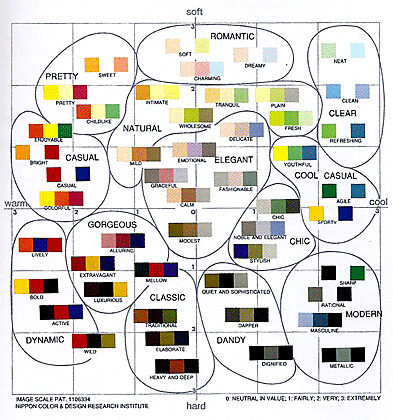The effective use of color in design has a proven impact on readability, conversion and engagement both online and offline. Sometimes subtle changes in color for headlines and direct response cues can significantly increase a reader’s overall impression of the communication.
Color is shown to facilitate attention, recall, positive attitudes, perceived quality, and sales when compared to black and white. But, you knew that, or at least that’s one of the reasons you visit COLOURlovers so often.
| Share this Post | Tweet |
The trick is the effective use of color in ways that can positively impact associations to your brand and draw the intended response.
Mood of Participation
 Color is a mood enhancer, it’s so obvious when you look around this site and pay even a hint of attention to way your react to groups of colors.
Color is a mood enhancer, it’s so obvious when you look around this site and pay even a hint of attention to way your react to groups of colors.
There is a fine work by Shigenobu Kobayashi the founder and director of the Nippon Color and Design Research Institute called Color Image Scale that presents this idea of moods in color use and is a great starting place for discovering the impact or mood your color choices can send when used in association with your brand or simply to create a feeling in an ad or direct mail piece.
Understanding how to use this element alone can have a dramatic impact on gaining reader or prospect participation. But, don’t default to red for attention getting, the research also shows that black and white can outperform or equate to color when used to evoke the necessary reaction.
Landing Pages are Your Playground
Using color effectively in online landing pages is a great place to start your entire strategy and research for color use. A landing page is generally any online page where you send a prospect in response to an ad or specific offer of information. It has only one purpose and that’s to create an action – a sign-up, trial, subscription, purchase, etc.
Using color to help facilitate or repeat directional clues is often the best way to increase participation. Arrows and other hints may seem a bit cliché, but they are proven to increase participation.

Image credit: unbounce
Landing pages are such a great play ground for color use because you can test the impact of color or direction clues on conversion in near real time and use some of what you learn to inform your choices in other mediums or in ads and direct mail campaigns.
When it comes to color in landing pages there are four elements that should be tested rigorously. Using a tool such a Google Web Site Optimizer you create what are known as A/B tests that allow you to create two versions of a landing page (one with a blue headline and one with a green headline) to determine if one has more of the desired impact.

Image credit: unbounce
Common elements that benefit most from color are background, headline, core visual element and the “button” or call to action.
Background color can have a dramatic impact on the overall mood presented to the visitor and should coincide with the mood intended. By default this is an element that is ripe for testing.
Headlines often do the heavy lifting when it comes to grabbing the very short attention span of the reader. On top of containing a very compelling reason to read on subtle color variations have shown to cause dramatic upticks in conversion.
Effective landing pages and ads for that matter often rely on a core graphic or image to evoke an emotional response. These days that often includes video. Testing various images is very important.
If the primary purpose of a landing page is to get a response, then it must be painfully clear how to take the action. A big honking click here button outperforms a text link all day long, but red vs. orange or green vs. blue is something that must be tested.
Some of the best research on landing pages is coming out of unbounce. Read their ebook titled 101 Landing Page Optimization Tips or pick up Tim Ash’s Landing Page Optimization.